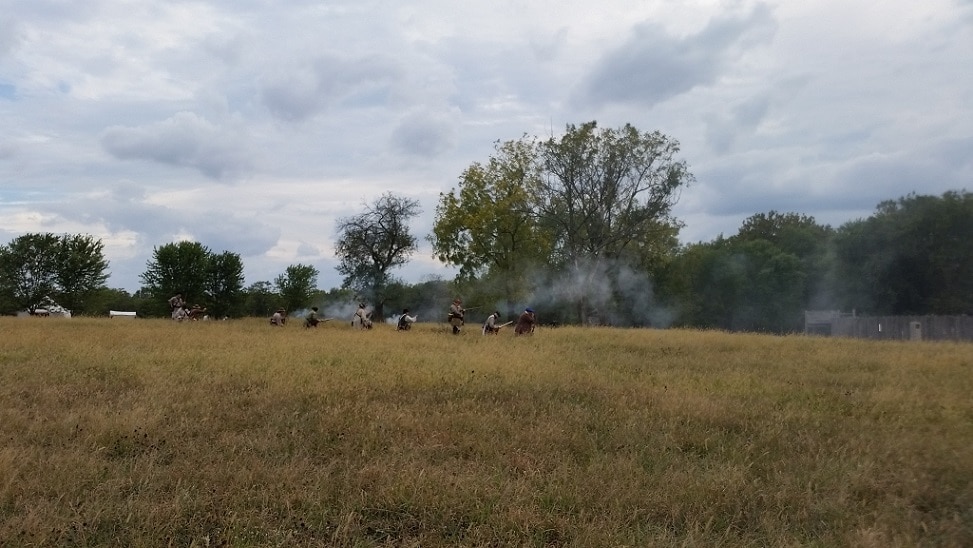Although its existence was short lived – 1756 to 1765, Fort Loudoun’s mark on American history is significant. It was part of a chain of frontier forts in Pennsylvania that were erected in order to protect settlers from Indian raids which stemmed from the French and Indian war. As well as for protection during the Forbes Expedition of 1758, the fort was also a stopping off point for supplies and military troops going westward.
By 1765 military action had calmed down, but Indian raids on settlers continued. Guns, powder, knives, lead and hatchets were being sold and traded to the Indians, then being used against the settlers. Companies were more concerned with the profit they made on their goods, rather than who was getting them. The military troops at Fort Loudoun worked to protect these trains. This resulted in a rebellion. James Smith gathered a group of men who wanted to protect their families and land, trained them to fight like the Indians, then began to stop wagon trains carrying trade goods, and inspected them for weapons. This continued from early March 1765 until November 16, 1765, when James Smith and his Black Boys laid siege to Fort Loudoun and demanded that the weapons be surrender. The siege lasted late into the night until an agreement was arranged, and the fighting ended. After that event the fort faded from history. As Indian attacks grew less the fort was then decommissioned.
The uprising at Fort Loudoun was a spark that helped ignite the American Revolution, which resulted in the birth of a nation.
To step back in history and find out more about Fort Loudoun, visit fortloudounpa.com.
Article by Patricia Bunn

